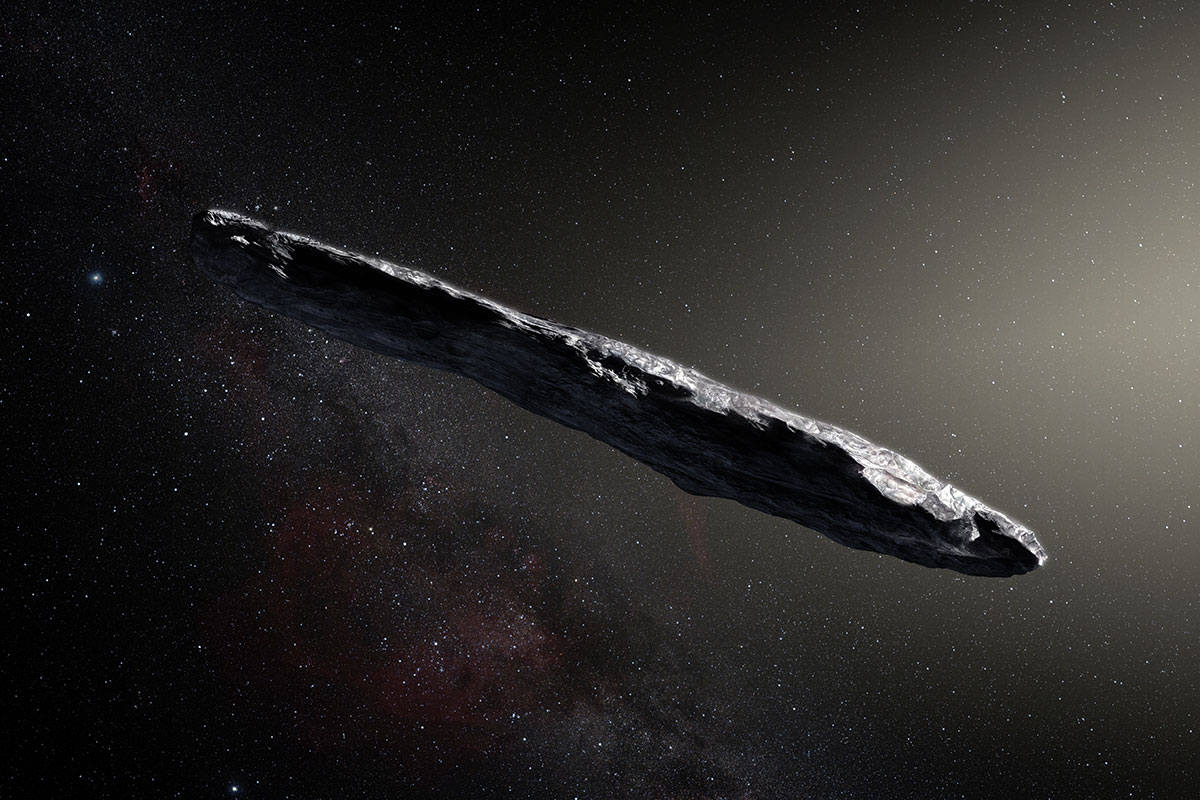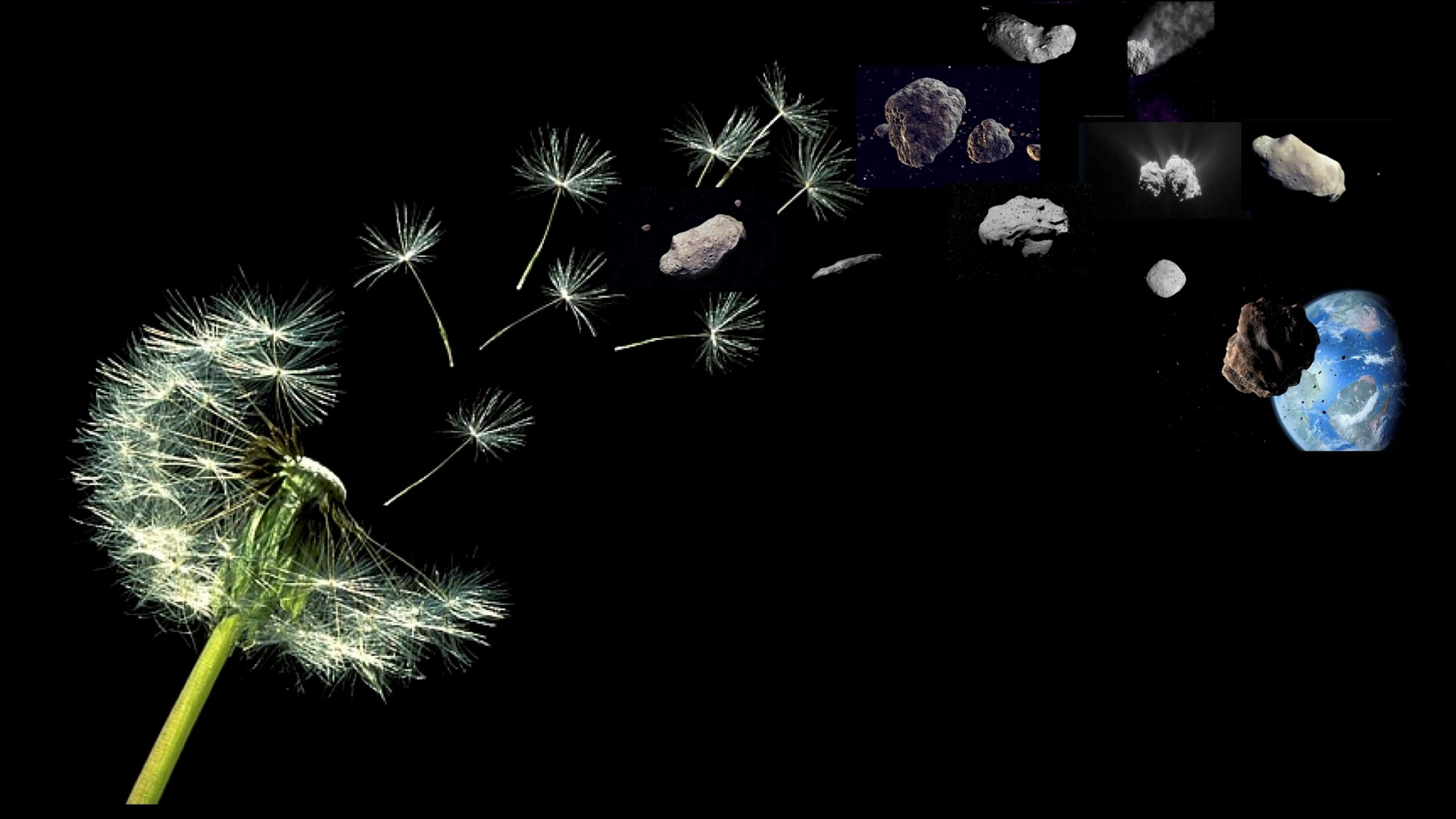
'Oumuamua might form the heart of an alien planet someday.
Widely wandering bodies such as the odd, needle-shaped 'Oumuamua — the first interstellar object ever confirmed in our own solar system — commonly seed nascent planetary systems, a new study suggests.
Such visitors likely serve as scaffolds, allowing alien worlds to take shape much faster than they otherwise would, researchers said.
Related: 'Oumuamua: Our 1st Interstellar Visitor Explained in Photos
"For decades, it has been investigated how planets grow from millimeter-sized grit to planets as huge as Jupiters. This growth process would be very slow, but observations tell us otherwise — some planets exist around very young stars," study lead author Susanne Pfalzner, of the Jülich Supercomputing Center and the Max Planck Institute for Radio Astronomy in Germany, said in a statement.
"The presence of 100-meter-sized [330 feet] objects within this grit could accelerate the planet-formation process considerably," Pfalzner said. "Attracting the grit and gas of the surrounding disk, some of the former interstellar objects could grow into full planets."
'Oumuamua was first spotted zooming through the inner solar system in October 2017. The object's weird trajectory revealed that it came from very far away, and subsequent observations heightened the intrigue. 'Oumuamua is a reflective, narrow object perhaps six times longer than it is wide, and it appears to be tumbling in an odd way.
Get the Space.com Newsletter
Breaking space news, the latest updates on rocket launches, skywatching events and more!
The interstellar visitor's collective characteristics have spurred some speculation that it could be an alien spacecraft of some kind. Most scientists, however, believe it's an inert hunk of rock and ice. It's probably a comet that was ejected from its natal system long ago by a gravitational encounter with a migrating planet or a neighboring star, that idea goes.
The fact that astronomers spotted 'Oumuamua at all suggests that such untethered objects are incredibly abundant throughout our Milky Way galaxy. And that would mean they stumble into newly forming solar systems quite often, the new study said.

Indeed, Pfalzner and co-author Michele Bannister, an astrophysicist at Queen's University Belfast in Northern Ireland, calculated that each protoplanetary disk surrounding a newborn star these days likely contains a minimum of 10 million interstellar objects at least as big as 'Oumuamua. ('Oumuamua's exact size is unknown. Scientists think it measures less than 2,600 feet, or 800 m, in its longest dimension.)
"At such initial sizes, the growth process of these seed planetesimals in the initial gas- and dust-rich protoplanetary disks is likely to be substantially accelerated," the duo wrote in the new paper, which was published online today (April 8) in The Astrophysical Journal Letters. (You can read it for free at the online preprint site arXiv.org.)
"The consequences of this discovery might be far-reaching," Bannister said in the same statement. "Across the galaxy, the debris of past planetary systems would help build the next generation of planetary systems. Every new generation of stars would increase the abundance of interstellar objects through space."
- If 'Oumuamua Is an Alien Spacecraft, It's Keeping Quiet So Far
- Interstellar Object 'Oumuamua's Surprise Arrival Still Thrills Scientists One Year Later
- Interstellar Object 'Oumuamua Could Be a Comet in Disguise
Mike Wall's book about the search for alien life, "Out There" (Grand Central Publishing, 2018; illustrated by Karl Tate), is out now. Follow him on Twitter @michaeldwall. Follow us on Twitter @Spacedotcom or Facebook.
Join our Space Forums to keep talking space on the latest missions, night sky and more! And if you have a news tip, correction or comment, let us know at: community@space.com.

Michael Wall is a Senior Space Writer with Space.com and joined the team in 2010. He primarily covers exoplanets, spaceflight and military space, but has been known to dabble in the space art beat. His book about the search for alien life, "Out There," was published on Nov. 13, 2018. Before becoming a science writer, Michael worked as a herpetologist and wildlife biologist. He has a Ph.D. in evolutionary biology from the University of Sydney, Australia, a bachelor's degree from the University of Arizona, and a graduate certificate in science writing from the University of California, Santa Cruz. To find out what his latest project is, you can follow Michael on Twitter.









